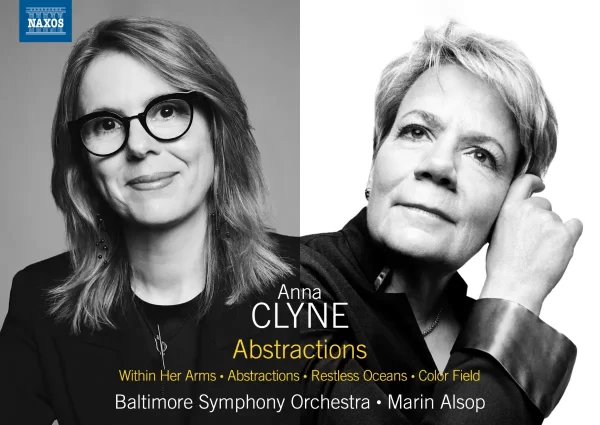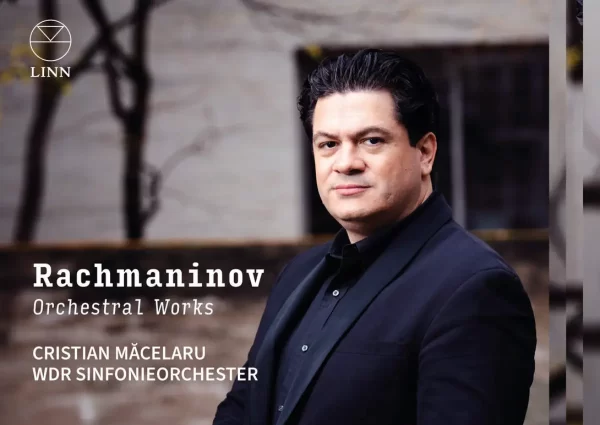Haydn and Beethoven are the clear models for Schubert’s first four symphonies, but the fifth, written in 1816, reflects the composer’s newfound enthusiasm for Mozart. Schubert scholar Brian Newbould, who’s excellent booklet article accompanies this release, feels that 1816 could well be called Schubert’s ‘Mozart year’. This is because of how much time Schubert spent studying Mozart’s music, and how that study is then reflected in his own music. For example, the fifth symphony’s instrumentation (the smallest Schubert ever used in a symphony) includes a flute, and 2 oboes, 2 bassoons, 2 horns and strings – the same instrumentation used for the first version of Mozart’s 40th.
The fifth’s first two movements in this performance, by the Scottish Chamber Orchestra under Music Director Maxim Emelyanychev, are utterly charming, the opening quick without ever feeling rushed, with buoyant articulation and artful phrasing. The following Andante con moto (stress on the ‘con moto’) is lithe and lyrical, Emelyanychev embracing a phrasing elasticity often missing from historically informed performances.
But the final two movements are cut from different interpretive cloth. Emelyanychev’s sees the Menuetto as a Beethovenian Scherzo, using sharp accents and a driven tempo to evoke somber tension. While the playing is vivid and precise, both Dausgaard (Swedish Chamber Orchestra/BIS) and de Vriend (Residentie Orkest Hague/Challenge Classics) find more swing and a more playful lightness in the music.
The final movement is virtuosic, but breathless, its incessant speed and hard-edged articulation again suggesting a Beethovenian hard-won victory rather than a good-natured celebration. Dausgaard is again more convincing, as is Gardiner, whose surprisingly sunny performance with the Orchestre Revolutionnaire et Romantique (SDG) has a geniality all too rare in this conductor’s interpretations.
The ‘Unfinished’ Symphony is more Romantic in conception, which Emelyanychev provides. Yet too often, the string ensemble sound, in group size of 8/8/6/5/3, feels undernourished. One might argue that we hear more wind detail, but in Mackerras’s late 1990’s recording with this same orchestra (Telarc), there is richer string sonority, and it makes a difference. Emelyanychev’s interpretation also lacks the sweep and organic inevitability of Mackerras’s reading, or Blomstedt’s with the Gewandhaus Orchestra (DG).
Join The Classical Newsletter
Get weekly updates from The Classic Review delivered straight to your inbox.
It was fascinating to compare this new performance with Mackerras’s earlier recording. Emelyanychev asks for sharp attacks on accents, whereas Mackerras’s solicits more weight from accents. Telarc’s recording also has more depth (and perhaps a larger string section.) Most importantly, Mackerras’s interpretation has greater dramatic thrust. In the climax of the first movement (in both performances around the 8-minute mark) Mackerras’s string are so impassioned they threaten to go off the rails, while with Emelyanychev we are invited to admire the orchestra’s technical prowess. With Mackerras (and Carlos Kleiber’s classic reading with the Vienna Philharmonic on DG) the brass, especially trombones, rage and roar, adding a sense of Teutonic weight that Emelyanychev eschews.
The new recording offers a substantial bonus of the “Rondo for violin and strings in A major” (D438), beautifully played by the orchestra’s leader, Stephanie Gonley. If only the charm and grace of heard here would also have found its way into the fifth symphony’s final movement. Linn’s recording is very fine, offering clarity and warmth in equal measure.
This is the second album of Schubert symphonies from the Emelyanychev/SCO partnership. Their first is a performance of the Ninth that is undeniably exciting and only intermittently successful (reviewed here). Both current readings have energy and character, played with exceptional skill. Yet Dausgaard and Abbado (in his recording with the Chamber Orchestra of Europe/DG) are more consistently successful chamber-sized readings.

Recommended Comparisons
Mackerras | Dausgaard | Blomstedt | Kleiber | Abbado
Schubert
Symphony No. 5, D. 485
Symphony No. 8 (“Unfinished”), D. 759
Rondo in A major, D. 438
Scottish Chamber Orchestra
Maxim Emelyanychev – Conductor

Check offers of this album on Amazon.
Album Details |
|
|---|---|
| Album name | Schubert – Symphony Nos. 5 & 8 |
| Label | Linn Records |
| Catalogue No. | CKD748 |
| Amazon Music link | Stream here |
| Apple Music link | Stream here |

















